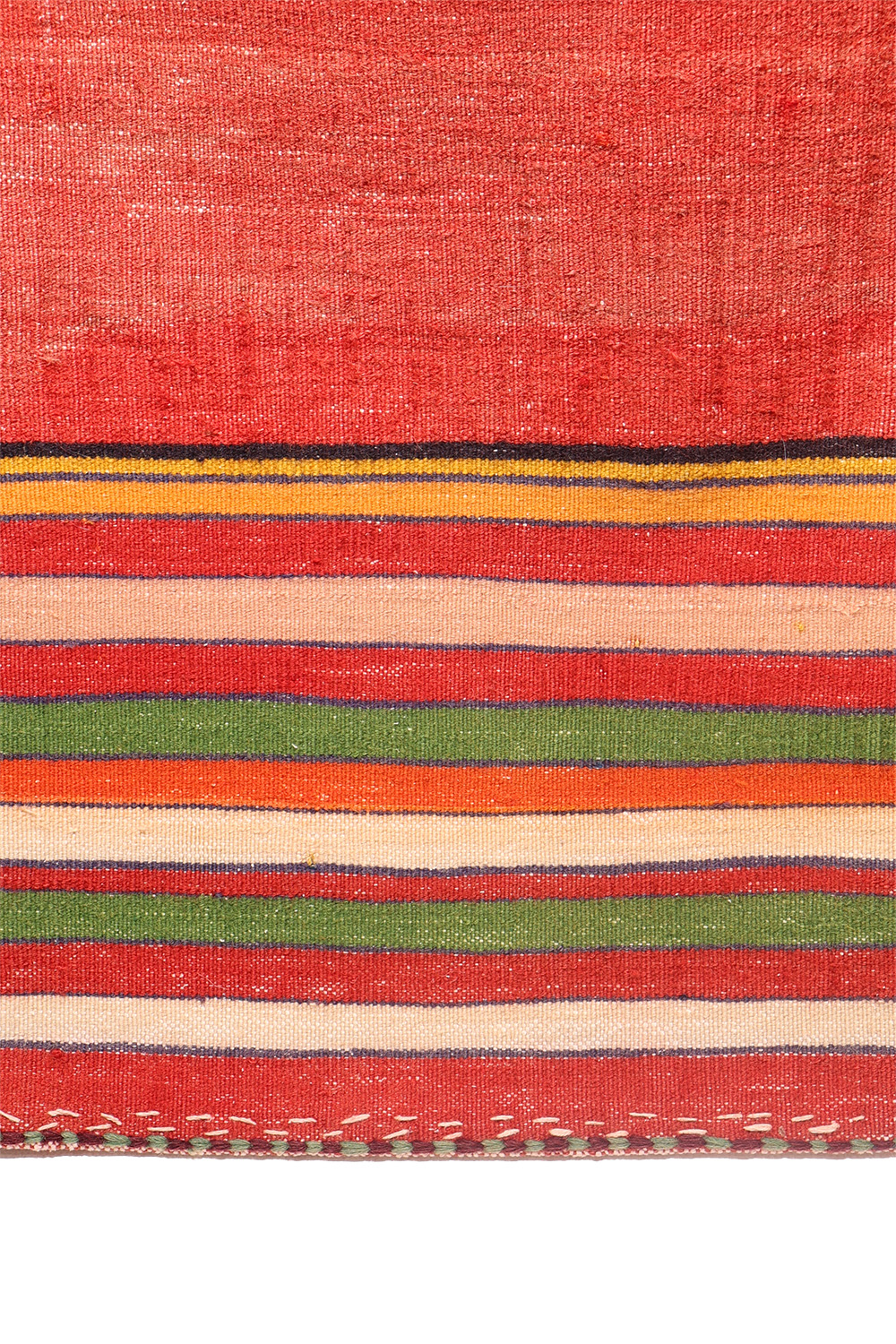A charming and playful vintage Qashqai kilim—originally used for making bread—this piece offers simple yet captivating design. The central field is left mostly plain, woven in red with a beautiful abrash effect, where the color subtly shifts and changes across the surface. There is a small repair in the center, where the weaver has skillfully reworked the area using a traditional comb motif.
The kilim features a striped border at both the top and bottom edges, while the sides are adorned with colorful pompons, adding a fun and vibrant touch. These pompons echo the colors of the stripes, creating a cohesive and lively design.
This quirky, cheerful kilim is perfect as a bedside rug—an uplifting way to start your day with joy!
Material: 100% hand-spun sheep wool
Size: 150×79 cms
Origin: Qashqai tribe, Iran
Date of weaving: 1990s
Sofrehs take their name from the Farsi (Persian) word for cloth and are used for several functions connected with preparing and eating food. Eating cloths are normally referred to simply as sofrehs and vary enormously in size-from small, rectangular mats for personal use to extremelly long, narrow runners for communal eating. They are woven in several standard techniques, including alternating bands of kilim and pile rug, and produced by a number of nomadic and tribal weavers in Iran, Afghanistan, Central Asia and to a lesser degree, elsewhere.
Turkic-speaking pastoral nomadic tribal groups began entering central and southern Iran during the eleventh and twelfth centuries.The Qashqai, as a large tribal unit, dates back at least to the early eighteenth century, when some Turkish(Turki)-speaking tribal groups in the region existed under the name Qashqai.
Qashqai kilims are best known for their boldness and and freedom in the way the pattern is drawn. An aesthetically pleasing geometry, the fineness of their wool and their clear, strong colours combine to ensure their reputation as superlative examples.
1 in stock
| Weight | 2.9 kg |
|---|




